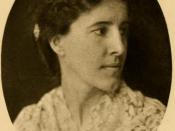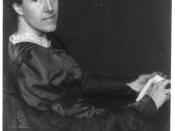The Pygmalion Effect is when ones expectations are met. This is usually between a coach and player, teacher and student, parent and child, doctor and patient or even ones own expectations. In the play "Pygmalion", we see the teacher/student relationship. In "Yellow Wallpaper" by Charlotte Perkins Gilman, the Pygmalion Effect is seen in two relationships; the doctor patient relationship and ones own expectations. However while the play Pygmalion supports the Pygmalion Effect, Yellow Wallpaper repels it.
In the story "The Yellow Wallpaper" a women (presumed to be Charlotte Perkins Gilman), is a women in a state of post depression. This story is written back in 1890 where women's medical conditions that would be classified as depression could only be diagnosed as a "nervous condition." Gilman is one of the women who suffered from depression treated as a "nervous condition," she is to stay in a room with hideous yellow wallpaper.
As Gilman stays longer in the room she observes the yellow wallpaper, watching the lines and fallowing patterns. Yet as she continues she begins to see eyes, and a person behind bars. This would begin to support that she is not getting better but getting worse, that starts to prove that the expectations her husband (also a doctor) has are now falling too. A little later on she begins to see a women creeping about in night, but she then too discovers that the same women can be seen in every window of the house creeping about, even in daylight. As her case worsens, the expectations that she had her self and her husband's expectations then begin to fall weak, thus proving false to the Pygmalion Effect.
In the play write "Pygmalion", our main character, Eliza Doolittle, is a simple lower class women who sells...


